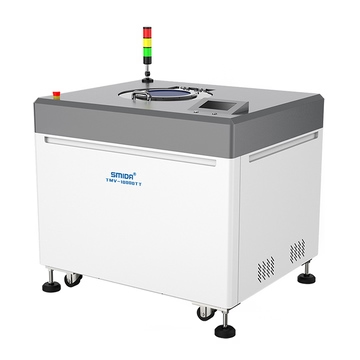Centrifugal Mixers: Enhancing Homogeneity in Complex Blends from Jack Harry's blog
Centrifugal mixers are an important tool in the field of blending and mixing, especially when it comes to creating homogeneity in complex blends. By understanding the science behind these powerful machines, we can better appreciate their role in achieving uniformity in a variety of materials.
Centrifugal Force and Shear Forces
One of the key features of centrifugal mixers is their ability to create a strong centrifugal force, which pushes the materials being mixed towards the outer edges of the container. This force is essential in ensuring thorough mixing, as it helps to overcome the resistance of different particles and substances to blend together. As the materials move towards the edges of the container, they are subjected to high levels of shear forces and turbulence, which further aids in the mixing process.
Breaking Down Agglomerates
Additionally, the high-speed rotation of the mixing vessel helps to break down any agglomerates or clumps within the mixture, ensuring that the final product is smooth and uniform. This is particularly important when working with powders or other materials that are prone to forming lumps or clusters during the mixing process. The centrifugal force generated by the mixer helps to break up these agglomerates, ensuring that each particle is evenly distributed throughout the blend.
Mixing Materials with Different Properties
Another benefit of centrifugal mixers is their ability to mix materials of different densities and viscosities. Unlike traditional mixers, which rely on gravity to move materials around in the mixing vessel, centrifugal mixers use centrifugal force to create a dynamic mixing environment. This allows for more efficient blending of materials with different properties, ensuring that the final product is well-mixed and homogeneous.
Handling Sensitive Materials
Furthermore, centrifugal mixer are particularly well-suited for mixing materials that are sensitive to heat or shear. The high-speed rotation of the mixing vessel helps to evenly distribute heat throughout the mixture, preventing localized hot spots that can damage sensitive materials. Additionally, the controlled shear forces generated by the mixer help to prevent material degradation and ensure that the final product retains its desired properties.

Versatility in Applications
In addition to their mixing capabilities, centrifugal mixers are also versatile tools that can be used for a variety of other applications. For example, they can be used for dispersing solids into liquids, emulsifying materials, or even granulating powders. Their ability to create a strong centrifugal force makes them ideal for processes that require thorough mixing or dispersion of materials.
Conclusion
Overall, centrifugal mixers play a crucial role in enhancing homogeneity in complex blends. Their ability to generate strong centrifugal forces, break down agglomerates, and mix materials of different properties sets them apart as powerful tools for achieving uniformity in mixing processes. By understanding the science behind these machines, we can better appreciate their capabilities and harness their potential for creating high-quality blends in a wide range of industries.

The Wall